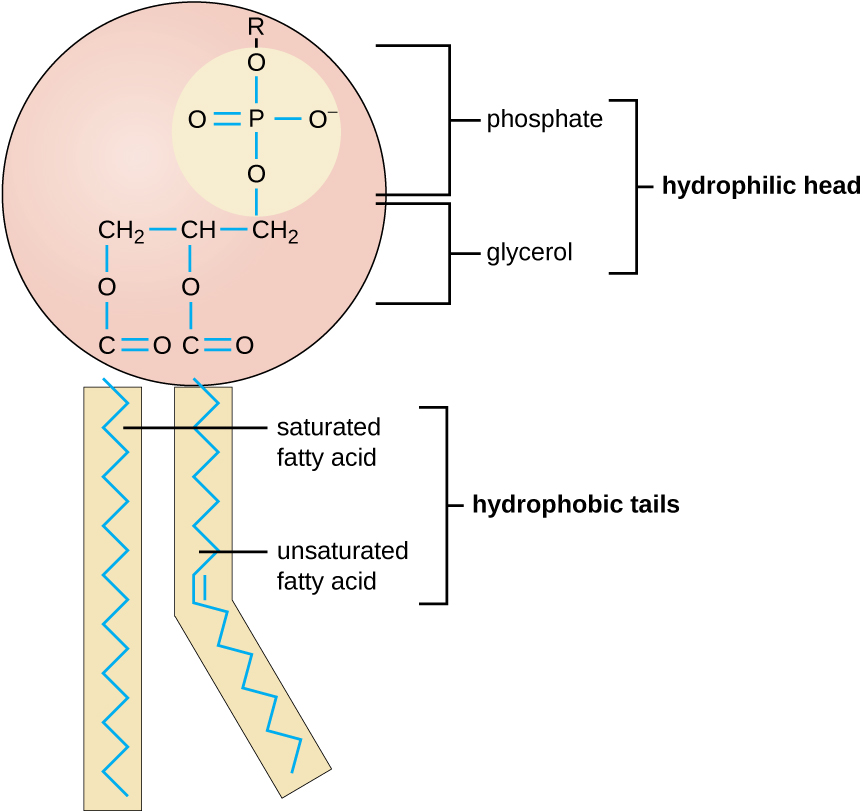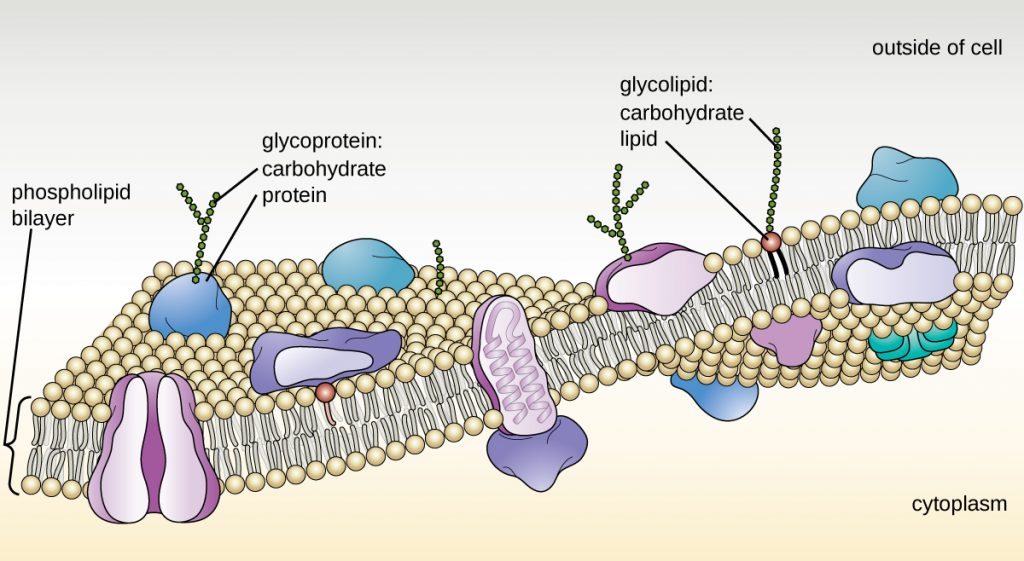CELL MEMBRANES
Cell membranes are also known as plasma membranes or cytoplasmic membranes. Cell membranes are a cell basic, prokaryotic and eukaryotic cells have a cell membrane. The cell membrane separates the cell from the environment. In prokaryotes the cell membrane lies beneath the cell wall.
Functions of the cell membrane include acting as a boundary and controlling traffic in and out of the cell (membrane transport). Components of the prokaryotic cell membrane include phospholipids (40%) and proteins (60%). The phospholipids are arranged in a bilayer with the tails of the phospholipids facing each other. Phospholipids have hydrophilic (water-loving) heads and hydrophobic (water-fearing) tails. The tails wiggle and add to the fluidity of the cell membrane; cell membranes are about as fluid as olive oil. The phospholipid bilayer allows some molecules to easily pass across the membrane and does not allow other molecules to easily pass across the membrane. Cell membranes are therefore selectively permeable. Most of the phospholipid bilayer is made up of the hydrophobic core. Hydrophobic molecules are allowed easy passage across the membrane. Hydrophilic molecules cannot pass the hydrophobic core so they cannot easily pass across the membrane. The proteins in a membrane can act as transport channels. These transport channels can be used to transport specific molecules across the membrane. Proteins in the membrane can also be receptors, carriers, or recognition proteins.

Image from openstax Microbiology

Image from openstax Microbiology
